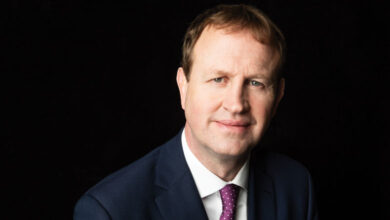The power of volunteering
 Emma Clarence, a leading consultant in social innovation, talks to eolas about why volunteering can yield impressive benefits for businesses and public services.
Emma Clarence, a leading consultant in social innovation, talks to eolas about why volunteering can yield impressive benefits for businesses and public services.
For Emma Clarence, a fundamental element of reshaping public services has to be people helping people. A key way to do this, she believes, is through volunteering. There’s already a strong culture of this in Ireland with around 41 per cent of the population involved in some sort of voluntary work, putting the country fourth in the World Giving Index for 2014.
“People helping people has to be at the heart of public service reform,” Clarence explains. “Volunteers are usually recruited by being asked directly, so I think it’s about encouraging a culture amongst those people who are already volunteering to ask others to get involved.”
As well as companies getting their staff to participate in volunteering opportunities, another key way of engaging and encouraging people to get involved in volunteering is to tailor the request to the specific audience and look at various sources of talent which could be tapped. For example, schools could ask parents, hospitals could ask patients and visitors. The message mainly is to ask people directly if they can help rather than rolling out a broad campaign which won’t get as much of an uptake.
But in this current environment when people are already working long hours, often for little remuneration, just how does a business sell the idea of volunteering to their employees? “One of the things we know from people who volunteer is it’s not the people who are the recipients who benefit but the people who do it,” says Clarence. “They have better outcomes in terms of their well-being, they actually enjoy it, their confidence grows, so it’s a really useful tool for people who might be a little isolated or vulnerable.”
These activities have been shown as being important for increasing sense of value and self-worth for volunteers. As a new approach, large companies are beginning to give employees time off to volunteer. In order to back this up, they should therefore be encouraged to focus that time to doing something useful.
“Encouraging staff needs to be made a vital element from the very top down,” Clarence continues. “Perhaps allow staff to identify areas which could benefit from social action. Empowering people is really important. They often know the gaps and needs of the community but don’t have the resources or ability to fill it. Another crucial role is communicating widely. It’s so important to speak to a range of people, not just staff. These are all fundamental steps in developing the idea of people incorporating people to make public services more personalised.”
 Another major factor here is how businesses and organisations promote the benefits of volunteering. It doesn’t have to be a big commitment. It can easily be carried out on an ad hoc basic with as little as a few hours per month being dedicated to it.
Another major factor here is how businesses and organisations promote the benefits of volunteering. It doesn’t have to be a big commitment. It can easily be carried out on an ad hoc basic with as little as a few hours per month being dedicated to it.
It is important to highlight that the idea that volunteering isn’t only of benefit to the recipients and that it’s actually two-way. Clarence thinks that this can really help to encourage people to get involved, especially those who might be a bit hesitant and particularly if they realise it’s going to be beneficial to everyone.
She feels that volunteering is the perfect way to restructure the delivery of public services: “If we look at reformulating the way we deliver public services, improving performance, tapping into the time, skills and resources and giving them impact within our communities and public services, this creates social action volunteering with impact. Harnessing the resources that are available.”
So realistically, how do we begin on this new road? “Understanding what is happening in the local community is key to beginning this new process,” Clarence contends. “Look at some of the key areas where we can help public services be redesigned. One of the best ways to do so is to look at what’s out there already, what’s happening and what’s missing.
“Too often public services don’t know all of the different facilities, community organisations and activities that are taking place within their local area, they don’t have a joined-up vision. In that sense, actually mapping the assets which exist is a really important step. But so is identifying what is missing and where there are gaps.”
For businesses, it’s about empowering staff to get involved, communicating with them, mobilising them, creating opportunities and offering a reward. Companies can start small with a simple thank you but look at inventive ways of thanking volunteers e.g. vouchers or experiences. Clarence adds: “Talk through the main challenges identified, for example organisational culture. Look at how to change public participation, encouraging them not just to be passive-recipients of what the state can do for them,” Clarence adds.
Creativity plays a major role in terms of encouraging people to actually sign up and get involved in volunteering. Asking a person in the right way and rewarding them in the right way are two factors that can make all the difference in convincing someone to take part.
Clarence concludes: “It is vital to make people feel rewarded for their efforts. Ireland is already on the right track in terms of people volunteering, so why not build on this and identify areas within public service for which volunteering can be of assistance? Shift the balance, help people e





